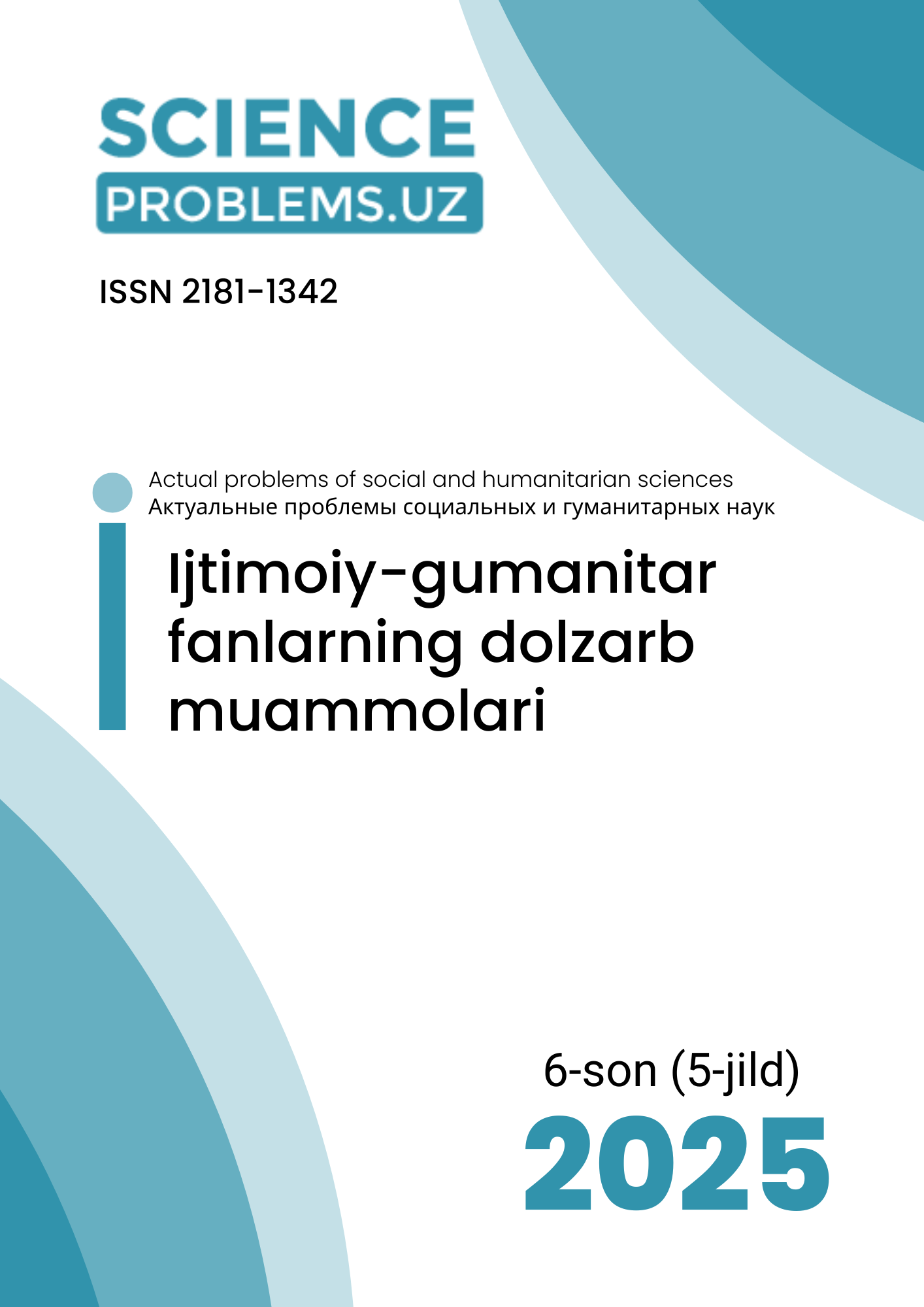AUDIOVIZUAL TARJIMA: SUBTITRLASH VA DUBLYAJ QIYINCHILIKLARI
Kalit so'zlar
https://doi.org/10.47390/SPR1342V5I6Y2025N55Kalit so'zlar
tarjima, texnologik taraqqiyot, imo-ishora tili tarjimasi, audiovizual tarjima, tarjimon, koʻp maʼnolilik, subtitrlar, dublyaj, moslashtirish.Annotasiya
Ushbu maqola audiovizual tarjima (AVT) sohasini oʻrganadi va uning asosiy ikki turi subtitrlash va dublyajni global media davrida madaniyatlararo muloqotni taʼminlovchi muhim vositalar sifatida tahlil qiladi. AVT bir vaqtning oʻzida koʻrish va eshitish uchun moʻljallangan kontentni tarjima qilish muammosini hal qiladi; bu jihati bilan u anʼanaviy, asosan yozma matnlarni qamrab oluvchi tarjimadan farq qiladi. Dublyaj va subtitrlash AVTning asosiy shakllari boʻlib, har biri vizual mediada til toʻsiqlarini yengib oʻtishning oʻziga xos usullarini taqdim etadi. Dublyaj bu asl ovozni tarjima qilingan nutq bilan almashtirish boʻlib, bunda aktyorlarning lab harakatlari va ohangiga moslikka alohida eʼtibor qaratiladi. Subtitrlash esa, ekran pastki qismida paydo boʻladigan va soʻzlangan matnning qisqartirilgan yozma tarjimasini ifodalaydi; bu tur, vaqt va makon cheklovlari tufayli koʻpincha kuchli qisqartirishlarni talab qiladi. Maqolada har ikki uslub bilan bogʻliq texnik, madaniy va tarjimaviy qiyinchiliklar koʻrib chiqiladi hamda ularning xalqaro auditoriyalar uchun audiovizual kontentni ommalashtirishdagi oʻrni taʼkidlanadi. Shuningdek, maqola zamonaviy texnologiyalarning taʼsirida AVT qanday rivojlanib borayotgani va u global axborot makonida madaniyatlararo aloqaning ajralmas qismiga aylanganini yoritib beradi.
Manbalar
1. Audiovisual translation. Samarqand: SamDCHTI, 2024. - 280 bet.
2. Baldry, A. and P. J. Thibault (2006). Multimodal Transcription and Text Analysis. London/Oakville: Equinox.
3. Chaume, F. (2019). Audiovisual translation. In R. A. Valdeón, & A. Vidal (Eds.), The Routledge handbook of Spanish translation studies (pp. 311–351). Routledge.
4. Díaz-Cintas, Jorge and Aline Remael. Audiovisual Translation: Subtitling. London: Routledge, 2007.
5. Fois, Eleonora. (2012). Between, Audiovisual Translation: Practice. Between - open journals.
6. Forbes, J., & Street, S. (2000). European cinema: An overview. In J. Forbes, & S. Street (Eds.), European cinema: An introduction (pp. 1–51). Palgrave.
7. Gambier, Y., & Jin, H. (2022). A connected history of audiovisual translation. In E. Bielsa (Ed.), The Routledge handbook of translation and media (pp. 283–301). Routledge.
8. Gottlieb, H. (1994). Subtitling: Diagonal translation. Perspectives, 2(1), 101–121.
9. Gottlieb, Henrik. Subtitling. Routledge Encyclopedia of Translation Studies. Ed. Mona Baker. London: Routledge, 1998. 241–249. Print.
10. Mereu Keating, C. (2016). The politics of dubbing. Film censorship and state intervention in the translation of foreign cinema in fascist Italy. Peter Lang.
11. Muminov, Omon, (2005). A guide to simultaneous translation. Toshkent.
12. Nikolic, K. (2018). Reception studies in audiovisual translation – interlingual subtitling. In E. Di Giovanni, & Y. Gambier (Eds.), Reception studies in audiovisual translation (pp. 179–198). John Benjamins.
13. Paolinelli, Mario – Di Fortunato, Eleonora. Tradurre per il doppiaggio. La trasposizione linguistica dell’audiovisivo: teoria e pratica di un’arte imperfetta. Milano: Hoepli, 2005.
14. Pavesi, Maria. “Pronouns in Film Dubbing and the Dynamics of Audiovisual Communication.” VIAL (Vigo International Journal of Applied Linguistics), 6 (2009): 89–107.
15. Pedersen, J. (2011). Subtitling norms for television. John Benjamins.
16. Perez-Gonzalez, Luis. (2020). Audiovisual Translation.
17. Perego, Elisa. La traduzione audiovisiva. Roma: Carocci, 2005.
18. Sisto, A. (2013). Dubbing for fun, dubbing for real. In G. Parati (Ed.), New perspectives in Italian cultural studies. Volume 2 (pp. 95–105). Fairleigh Dickinson University Press.
19. Valdeón, R. A. (2022). Latest trends in audiovisual translation. Perspectives, 30(3), 369–381. https://doi.org/10.1080/0907676X.2022.2069226








